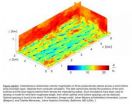(Press-News.org) AURORA, Colo. (Nov. 22, 2010) – Doctors at the University of Colorado School of Medicine were concerned recently when they found a nodule in the thyroid of a 64-year-old Colorado man. They extracted cells from the nodule, hoping to determine whether the man had cancer. But the biopsy results were inconclusive.
Even a few months ago, such uncertainty would have likely led to surgery to remove all or part of the thyroid. At least this patient would have faced a tense waiting period to see if, over time, he developed clear signs of cancer.
This time, however, the CU doctors simply sent the cell sample to a laboratory. There, a test analyzed the cells' molecular patterns, producing a result that was a relief for the patient: there was a high level of certainty he didn't have cancer.
The CU doctors are helping lead the way nationally in the use of this genomic approach to evaluating suspicious thyroid nodules. The test that benefitted the 64-year-old patient could eliminate the need for tens of thousands of unnecessary thyroid surgeries every year. The patient is willing to talk with reporters.
"This should allow many patients to avoid the cost, discomfort and risk of surgery," says Bryan Haugen, MD, who heads the Division of Endocrinology, Metabolism and Diabetes at the CU medical school.
Usually, when cells are extracted from suspicious nodules in the thyroid, they're found to be benign. No cancer. But here's the problem -- in 15-30 percent of those samples, it's hard to tell. The next step in most cases has been for a surgeon to remove part, or all, of the thyroid. That tissue is examined further. More than 70 percent of the time, there's no cancer, yet the patient had to undergo surgery to get that good news – and is often subjected to lifelong thyroid hormone therapy as a result.
Haugen and the national team sought to determine if the new test could help avoid those surgeries and still identify when there's no cancer. The answer, it now turns out, is yes. The secret lies in the genes.
"When we see test results showing the right patterns we can say with a great deal of certainty that, despite initial concerns, the patient does not have cancer," Haugen says.
The test was developed by Veracyte, a California-based molecular diagnostics company. The company is marketing its thyroid test – branded Afirma – on a limited basis and plans additional commercialization in early 2011.
Veracyte's researchers developed the test by identifying genomic patterns that would reliably tell when a patient has no cancer present. Haugen's team at CU, along with researchers at Brigham and Women's Hospital, a part of Harvard Medical School, is now co-leading a national trial to validate Veracyte's test. The trial involves more than 40 sites that are comparing the genomic test's results to analyses by two pathology experts of tissue obtained by traditional surgery. In September Haugen presented early information to an international thyroid conference in Paris. The findings confirmed the test's premise – that when certain patterns appear among 142 thyroid genes (out of tens of thousands), the odds are very high – more than 95 percent – that there's no cancer.
That's a probability but not a certainty. Those odds are similar, however, to when an expert pathologist looks at the cells and determines there is no cancer -- but this time without surgery.
The American Cancer Society estimates that 44,670 new thyroid cancer cases (33,930 in women, and 10,740 in men) will be diagnosed nationwide this year. Nearly two-thirds of the cases occur in people between the ages of 20 and 55. The chance of being diagnosed with thyroid cancer has doubled since 1990, in part because of better detection.
INFORMATION:
Faculty at the University of Colorado School of Medicine work to advance science and improve care. These faculty members include physicians, educators and scientists at University of Colorado Hospital, The Children's Hospital, Denver Health, National Jewish Health, and the Denver Veterans Affairs Medical Center. Degrees offered by the School of Medicine include doctor of medicine, doctor of physical therapy, and masters of physician assistant studies. The school is located on the Anschutz Medical Campus, one of four campuses in the University of Colorado system. To learn more about the medical school's care, education, research and community engagement, please visit its web site. For additional news and information, please visit the UC Denver newsroom online.
The Anschutz Medical Campus is a model for the type of interdisciplinary research in translational medicine that will take basic discovery "from the bench to the bedside."
END
WASHINGTON, D.C., November 23, 2010 -- For centuries, intellectuals have met at the ring-stained surfaces of coffee shops to pore over the most pressing problems of the day -- but has anyone ever pondered the coffee rings they left behind? What causes the formation of stain patterns left behind by coffee droplets on a surface?
You might think coffee ring formation, first described quantitatively by Deegan et al in a heavily cited article, is the most widely and ritualistically performed experiment in the world, given the prevalence of caffeine in cultures. But most of ...
WASHINGTON, D.C., November 23, 2010 -- Wind farms around the world are large and getting larger. Arranging thousands of wind turbines across many miles of land requires new tools that can balance cost and efficiency to provide the most energy for the buck.
Charles Meneveau, who studies fluid dynamics at Johns Hopkins University, and his collaborator Johan Meyers from Leuven University in Belgium, have developed a model to calculate the optimal spacing of turbines for the very large wind farms of the future. They will present their work today at the American Physical ...
WASHINGTON, D.C., November 23, 2010 -- To the causal aquarium visitor, the jellyfish doesn't seem to be a particularly powerful swimmer; compared to a fish, it glides slowly and peacefully.
But for Janna Nawroth, a graduate student at the California Institute of Technology in Pasadena, the undulations of this simple invertebrate hold secrets that may make possible a new generation of tiny pumps for medical applications and soft robotics -- work she describes today at the American Physical Society Division of Fluid Dynamics (DFD) meeting in Long Beach, CA
"Most pumps ...
WASHINGTON, D.C., November 23, 2010 -- Magnetic fluid hyperthermia (MFH) is a promising new cancer treatment that essentially "fries" cells inside tumors. The procedure has been used successfully in prostate, liver, and breast tumors. Magnetic nanoparticles (each billionths of a meter in size) are injected into the body intravenously and diffuse selectively into cancerous tissues. Add a high-frequency magnetic field, and the particles heat up, raising the temperature of the tumor cells.
"The entire tumor volume is heated above a threshold treatment temperature -- typically ...
WASHINGTON, D.C., November 23, 2010 -- New research from the University of South Florida suggests that one of the evolutionary secrets of the shark's success hides in one of its tiniest traits -- flexible scales on the bodies of these peerless predators that make them better hunters by allowing them to change directions while moving at full speed.
The key to this ability lies in the fact that the scales control water flow separation across the creatures' bodies, says Amy Lang of the University of Alabama who will present work she performed with her colleagues at the University ...
Pity the poor female fruit fly. Being a looker is simply not enough, it seems. If you're to get a date, much less a proposal, you must also smell and act like a girl. Otherwise, you might just have a fight on your hands. Read more in next week's issue of the online, open access journal PLoS Biology.
As with most animals, Drosophila face the problem of distinguishing between a potential mate and a potential competitor. If, when meeting a second fruit fly, a male fly thinks "female," he'll begin courting her. But if he senses another male, he'll fight. What triggers these ...
###
El Consejo Civil Mexicano para la Silvicultura Sostenible, A.C. (the Mexican Civil Council for Sustainable Forestry, known as CCMSS) is a non-profit, non-governmental organization that encourages and promotes conservation of forest ecosystems that are managed by the forest communities themselves. Known as Manejo Forestal Comunitario, or MFC, this system is supported by CCMSS members, who work in collaboration with communities and ejidos to put in place sustainable practices in forest management and improve the development, conservation, industrialization and commercialization ...
Performing a combination of aerobic exercise and resistance training was associated with improved glycemic levels among patients with type 2 diabetes, compared to patients who did not exercise, according to a study in the November 24 issue of JAMA. The level of improvement was not seen among patients who performed either aerobic exercise or resistance training alone.
Although it is generally accepted that regular exercise provides substantial health benefits for individuals with type 2 diabetes, the exact exercise type (aerobic vs. resistance vs. both) has been unclear. ...
A comparison of two strategies to determine the stage of suspected non-small cell lung cancer (NSCLC) finds that the less invasive method is more effective at identifying a type of lung cancer that has spread, and may result in a reduction of unnecessary surgical procedures and associated adverse effects for certain patients, according to a study in the November 24 issue of JAMA.
Lung cancer is the most commonly diagnosed cancer worldwide (1.35 million/year) and also the most frequent cause of cancer death (1.2 million/year). Determining the stage of cancer is an important ...
Annual screening by fecal immunochemical testing—a test that detects blood in the stool, has high sensitivity and specificity, and might improve participation rates through increased patient acceptability—reduces the risk of colorectal cancer and colorectal cancer related deaths, and reduces healthcare costs in comparison to all other screening strategies and to no screening. These are the conclusions of a complete economic evaluation performed by Braden Manns and colleagues from the University of Calgary, Alberta, Canada, and published in this week's PLoS Medicine.
Clinical ...

